There are a few grocery items that I will insist on using the name brand product: Ziploc bags, King Arthur bread flour, Arm & Hammer baking soda, to name a few. For other items, I just can’t avoid the allure of a slightly cheaper product: white sugar, dried pasta, milk. It’s all the same, right?
That definitely depends item-to-item. Baking soda is a specific chemical compound, so I would suspect it’s all the same. Flour, however, apparently varies widely depending on the type of wheat used to make it. Of course, this means we have bread, pizza, bleached, unbleached, white, whole wheat, 00, and every other type of flour. However, even within bleached, all-purpose flour, there’s a difference. When my family moved down from Canada to Texas, my mom remarked that our bread machine bread wasn’t the same because of a difference in the flour.
Accepting that flour products aren’t identical, the real question is whether it actually makes a difference in the end product. Specifically, would I like cookies made with a specific type of all-purpose flour? Sounds like a perfect cookie experiment.
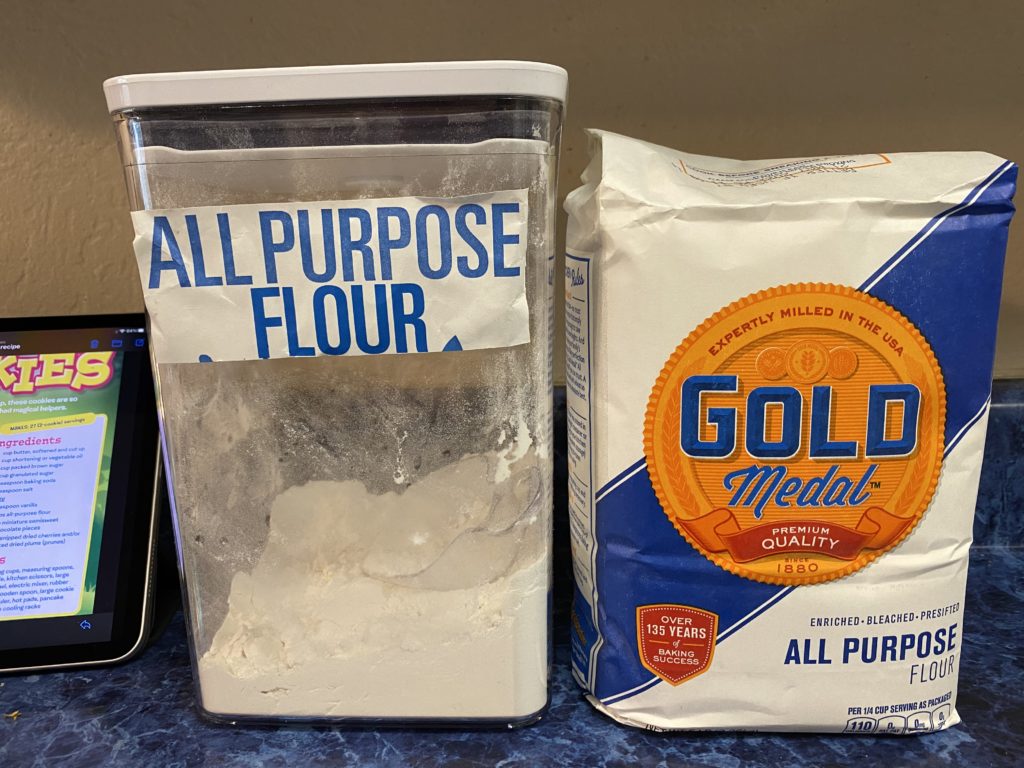
I was getting to the end of my bag of Safeway (store-brand) flour, and Bravetart recommends Gold Medal, so I planned to split a recipe in half using each type of flour. A friend passed along a recipe for “Mini Elf Cookies,” small chocolate chip cookies with dried cherries.
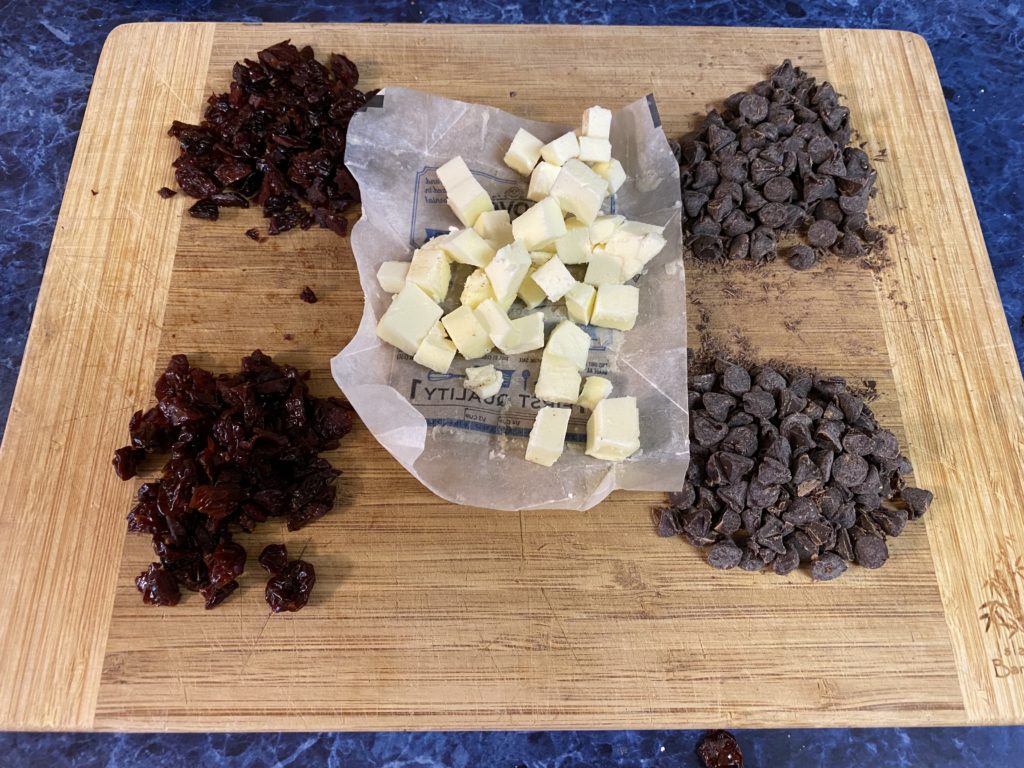
The recipe called for “snipped dried cherries” (Julie thinks it avoided chopped since it came from a kids book) and mini chocolate chips, which I substituted chopped chocolate chips for. They actually didn’t chop very well: I think I just lightly shaved them. Later after I took the picture, I got out my good chef’s knife to chop again, which worked much better.

The recipe was straightforward with creaming the butter and sugar and a few other dry ingredients. After that, I weighed the batter, split it into two bowls, and added a different flour to each.
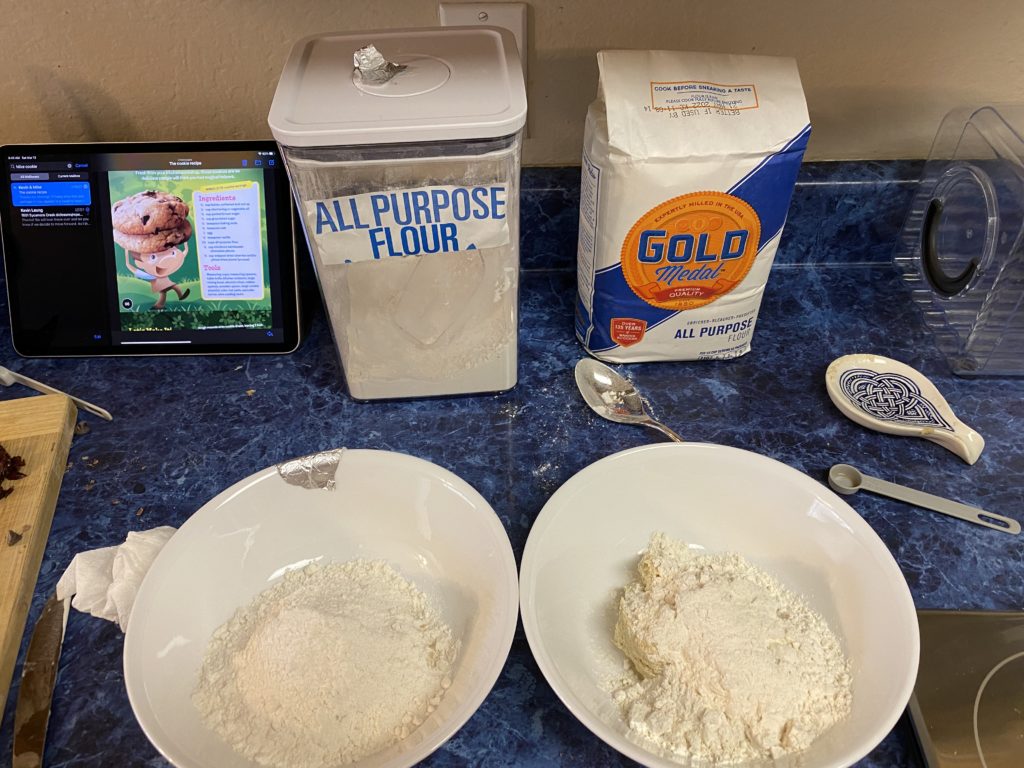
I thought I was quite clever in putting a bit of foil on everything with the store-brand flour to remember which was which in the entire process without needing to make two whole batches.
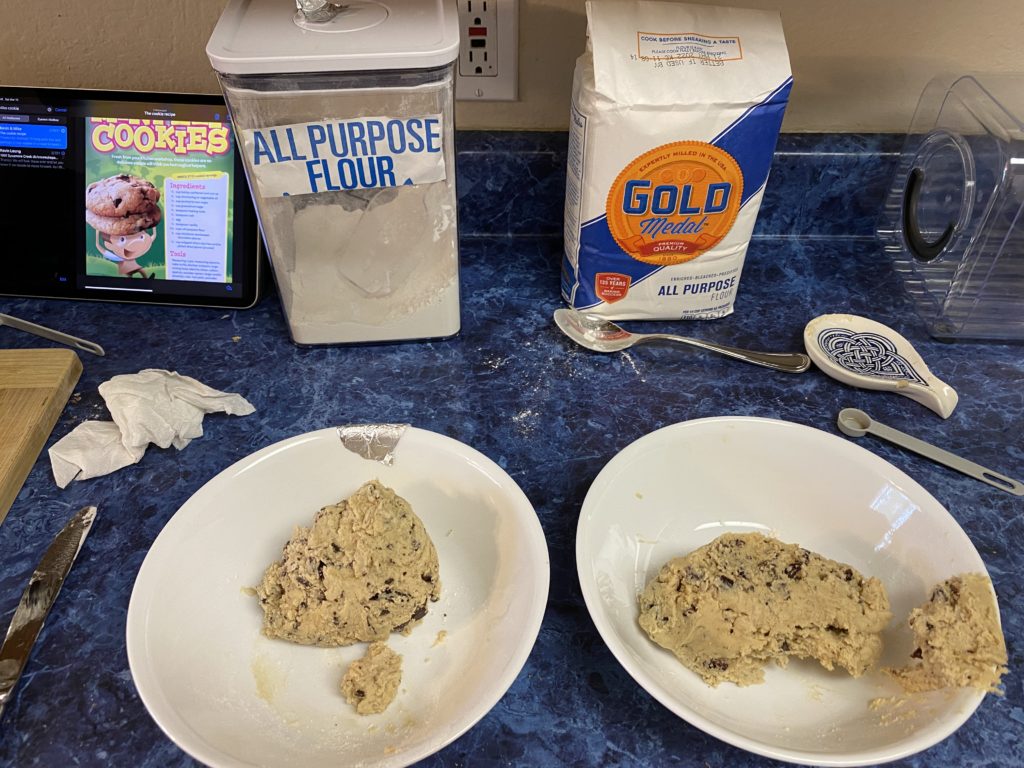
I threw each batch back into the stand mixer to incorporate, then pulled them out again. This recipe called for teaspoon (“mini”) sized cookies, and the weight again came out to roughly 16-17 grams per cookie.

For science, I put half of each dough onto the same sheet with the six on one side marked with a piece of foil at that end.

I baked both at the same time, giving it an extra minute and rotating top-to-bottom and side-to-side half-way through.
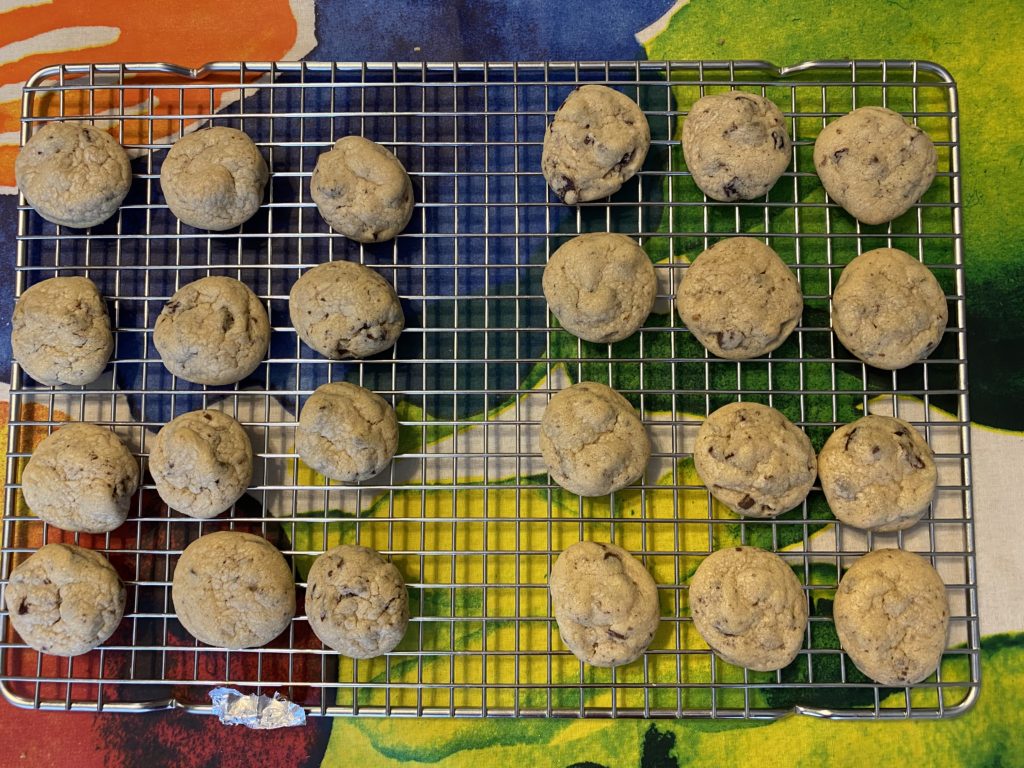
I have to admit that I was quite skeptical that I would notice a difference between the cookies, but even on visual inspection, they do look a little different: the store-brand cookies are a little taller (on average) while the Gold Medal cookies spread a little more. I wonder if my cookies haven’t been spreading because of the flour.

When we actually tasted the cookies, though, we couldn’t tell much of a difference. The shapes didn’t give a distinctly different texture or chew, and the flavors seemed about the same. Any differences might well have just been imagined, but we definitely didn’t prefer one to the other.
But to be clear, they were still good cookies. They were best fresh (like most cookies) and should certainly be gobbled up before sitting for too long.
So when it comes to all-purpose flours for your cookies, you’re probably okay just using your store-brand cookies. However, having made the jump, I personally will be buying Gold Medal going forward: I trust Bravetart enough to use a consistent national brand for various other baking projects that it may matter more for.
If you want to make mini elf cookies, you can find a very similar recipe here.
